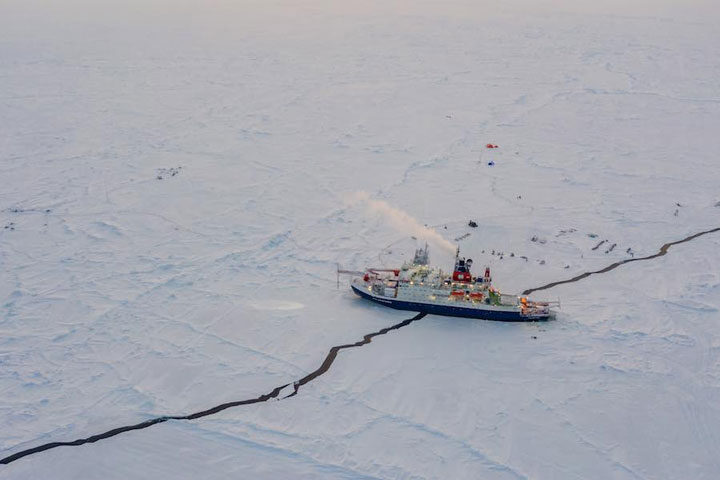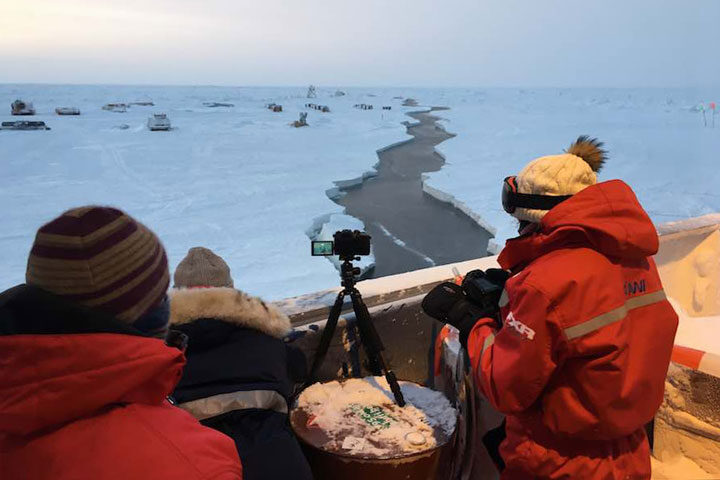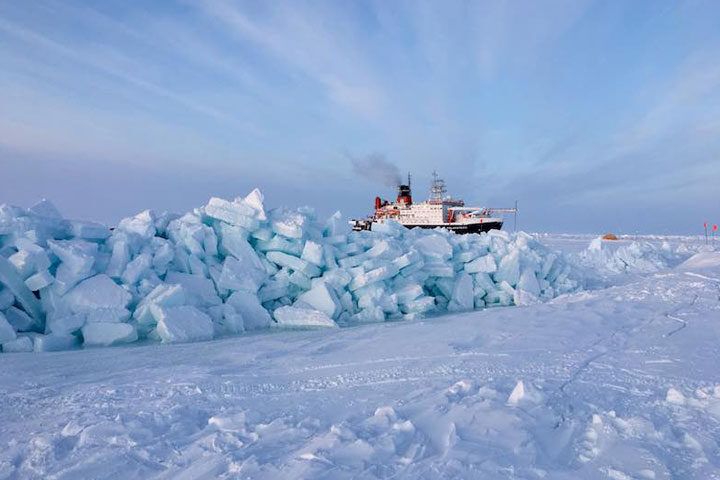
MOSAiC floe, captured from a drone. Credit: Manuel Ernst/UFA
In the last post, we took a brief tour of some of the sites that make up MOSAiC. In the days since, much has changed with the MOSAiC floe. Specifically, leads have formed in the ice pack that have altered our floe map and impacted our daily schedules drastically.
Put simply, a lead is just a crack in the ice. It’s never that simple, however. There are many complex processes that determine where and when leads form, how wide they can become, and whether or not they close back up or just re-freeze. Although leads are common features in sea ice and are vitally useful for satellite measurements of sea ice thickness, they still serve as a not-so-gentle reminder that the sea ice can be extremely dynamic, and that we have to be prepared for anything when working out on the ice.
A few days ago, a small crack formed near the ship that was just a few inches wide when it was first noticed. We were still able to go out on the ice, but it was being monitored closely. About an hour later, everyone out on the ice got a radio call from the ship that it was time to return. The crack had grown to a few meters wide, and ran directly under the ship and out in both directions. It continued to widen for a few hours, but luckily this first crack didn’t form under any installations or sensitive instruments. This lead, however, was just the start.

Polarstern. Credit: Steven Fons
In the next hours and next days, many other leads formed off of that initial crack. Some stayed only 1 meter wide, while others grew to 10 meters or more. Almost all work on the ice has been limited, and the leads are monitored closely. The most critical lead formed between the Central Observatory and two important sites: Met City and the Remote Sensing Site. It shifted the sites a few dozen meters from their previous location, to the point where the power cables had to be disconnected before they snapped.
While the leads themselves pose threats to the instruments and infrastructure on the ice, they are only half of the concern. When (and if) the leads close again, there is a possibility that ridges could form when the two sheets of ice collide together again. Ridges can grow to several meters tall and would crush anything that was caught in the middle. For now, we are keeping an eye on everything that is on the ice in order to limit any impact that the leads or ridges may have. We also keep our fingers crossed that the ice stabilizes soon!




